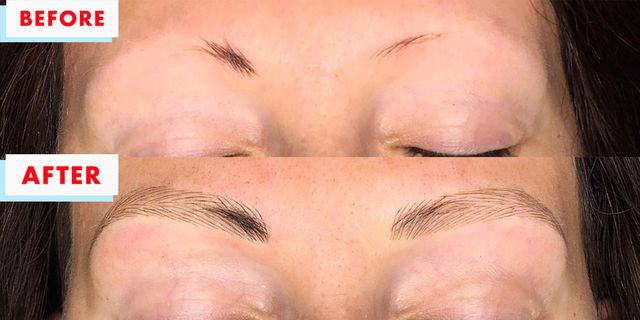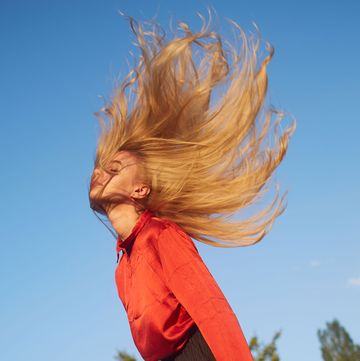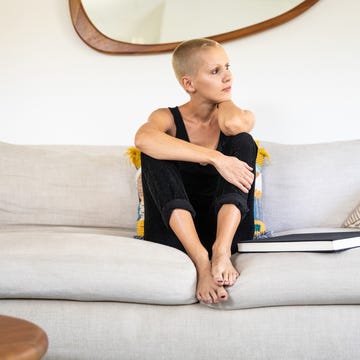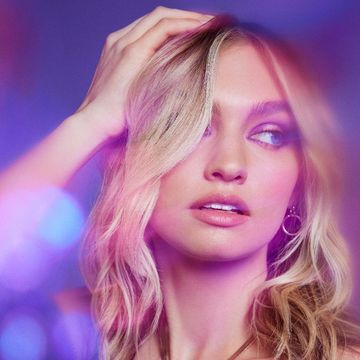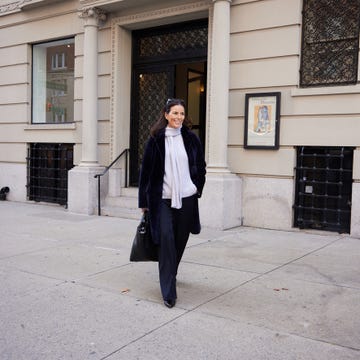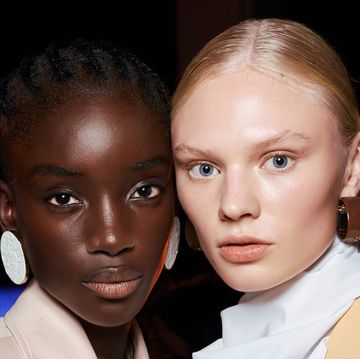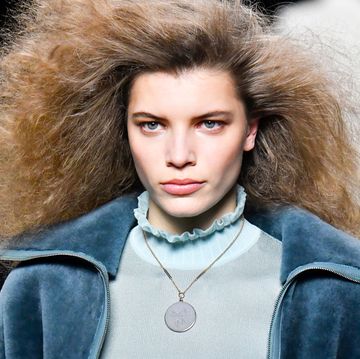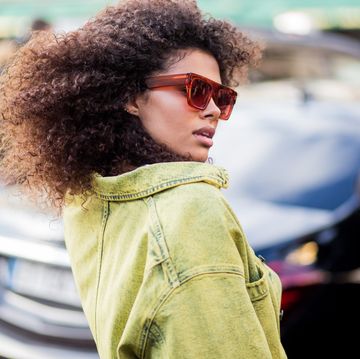When you've tried every pencil, powder, pigment, gel, and stencil at the makeup counter and your brows are still sparse, there's microblading, a more permanent fix for thin brows that promises to change your brow life. Microblading has grown steadily in popularity over the past couple of years and now everyone's mother knows about the once under-the-radar service. And with good reason: Nothing out there is as long-lasting nor natural-looking.
The face tattoo technique isn't as scary as it sounds. Here, we catch up with New York City-based microblading guru Piret Aava, aka The Eyebrow Doctor, to find out everything you need to know about the treatment.
Microblading is a form of tattooing
Unlike a regular tattoo, "microblading is a form of tattoo artistry where pigment is implanted under your skin with a manual handheld tool instead of a machine," Aava explains. "I draw hair-like strokes with the tool to mimic natural hairs in your brows. Even though it's not as deep as the regular tattoo, it's still a tattoo because pigment is implanted under the skin."
There are several forms of microblading
Aava first introduced us to microblading two years ago, and says that the popular beauty service has since evolved, with new techniques introduced such as microfeathering, which is microblading with a lighter touch focused on adding just a little to the brows' existing shape, and ombré or microshading, which mimics the look of brow makeup with with a more obviously filled-in look instead of hair-like strokes. Aava swears by the OG version ("I'm not a huge fan of following big brow trends," she says).
Preparation is key
There are some things you need to avoid before getting microbladed, namely, anything that will thin out your blood. If you drink a lot, take aspirin, or use retinol, stop one week before your treatment. "Retinol makes your skin thin and then you bleed a little more," Aava advises, adding that profuse bleeding pushes out pigment so that it doesn't stick as well. "Avoid blood thinners, aspirin, anything caffeinated, and alcohol during the healing process."
It doesn't hurt (too much)
Pain is relative. "Some feel more than others. Overall it feels like little scratches. You feel it, but it's not unbearable. It's not like having a baby," says Aava, who preps her patients' brows with topical numbing cream and tops up throughout the process to dull the discomfort. If you have a low pain tolerance, she says it's best if you apply numbing cream for up to an hour beforehand.
You might have heard that numbing cream inflames skin and makes for a less precise application. "I think it's bullshit," Aava says. "I've been using numbing cream for a while now and it's never been an issue."
Microblading takes time
"I don't like to rush anyone," says Aava, who blocks off two hours for new clients.
Aftercare is essential
Aftercare means protecting freshly bladed brows from all moisture–no sweaty workouts, swimming, or washing your face with water for a whole week. "If you get them wet, the scab comes off too early and you just lose the pigment," Aava explains.
Some patients experience itching and redness during the first week, which Vaseline can alleviate. Brows will look slightly darker at first, but the color will fade 30 to 40 percent. Aftercare ointments are provided during your first appointment. "Overall they look great right away and you don't have to hide," Aava says. "Slight redness and mild swelling is normal."
You will also have to avoid using any makeup and other products on the brows while they heal. "Treat it like an open wound," Aava says.
Results last up to three years
Depending on the skin and lifestyle, Aava's clients come back for touch-ups once every six months.
The brows' pigment will change over time
While they will be long-lasting, Aava says clients should have realistic expectations and understand the brows will naturally fade. "Your body might metabolize pigment faster, or if your skin is oilier, the pigment breaks down faster," she says. "Strokes soften and blur a bit. If you think it'll stay looking exactly like hairs forever and stay sharp, that's not going to happen. I find I don't need to do 'shading' technique because the body does it on its own."
Microblading is an investment
The first treatment can cost up to $900. While lower-priced services are available, Aava cautions against visiting inexperienced technicians. Remember, microblading is a form of tattooing.
[facebook ]https://www.facebook.com/ellemagazine/videos/10153584460161301/?comment_id=10153584474601301&comment_tracking=%7B%22tn%22%3A%22R%22%7D[/facebook]
